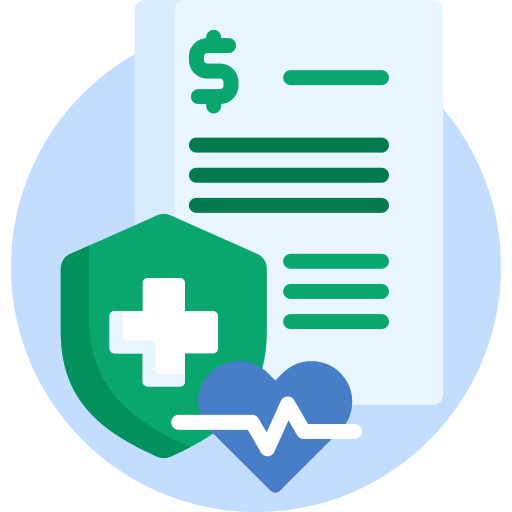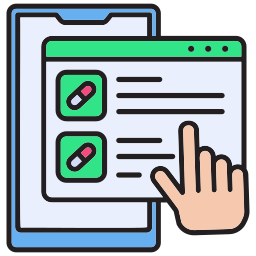The ongoing argument between Epic integration and legacy systems is an example of the crucial choices businesses consider to keep up with technology improvements.
The nature of legacy systems must be understood before we can close the gap.
The agencies estimated that the combined operating and maintenance costs of these legacy systems, which ranged in age from around 8 to 51 years, were approximately $337 million per year.
Although legacy systems have traditionally served businesses well, they often struggle to keep up with evolving business requirements and technological advancements, such as Epic integration.
Integrating Epic systems brings significant benefits, including better patient outcomes and improved operational efficiency. Interoperability is crucial in this process, and APIs play a vital role in Epic integration and establishing seamless data exchange across different systems.
It ensures that patient information is accurate and up-to-date, supporting enhanced decision-making and streamlined healthcare delivery.
What Healthcare Businesses Can Achieve with Epic’s Integration?
Healthcare practitioners can effectively handle patient data retrieval and expedite appointment scheduling in integration by utilizing API features.
APIs are important in Epic integration since they allow for more efficient data transmission and functionality. They provide accurate and up-to-date patient information, ensuring smooth communication across disparate healthcare systems.
Healthcare providers may improve patient care coordination, streamline workflow, and lessen administrative responsibilities by leveraging these healthcare APIs.
AI-powered solutions also automate the taking of clinical notes, enhancing documentation accuracy and supporting patient diagnosis based on organized interactions.
1️⃣ Patient Data Retrieval and Management
APIs enable seamless retrieval and management of patient data across healthcare systems. For instance, in EHR integrations, APIs facilitate secure access to comprehensive patient records, allowing healthcare providers to view medical histories, treatment plans, and diagnostic results in real time. This capability supports informed decision-making and enhances care coordination.
2️⃣ Appointment Scheduling and Order Entry
APIs streamline appointment scheduling and order entry processes within healthcare API workflows. Additionally, healthcare APIs facilitate order entry for medications, tests, and procedures, ensuring accuracy and reducing administrative overhead.
3️⃣ AI Use Cases in Clinical Notes
AI-powered tools in Epic Integration transform clinical note-taking processes. These tools can automatically transcribe and summarize physician-patient interactions, generating structured notes for initial diagnoses. It enhances efficiency in documentation, improves data accuracy, and supports clinical decision-making by providing insights into patient conditions and treatment plans.
Navigating the Conversion Challenge: From Legacy to Modern Epic Integration
Transitioning from legacy systems to modern FHIR standards poses challenges in healthcare IT. It involves overcoming compatibility issues, and migration complexities, and ensuring interoperability across platforms for seamless Epic integration and improved data exchange.

Here are a few Legacy to modern epic integration challenges to consider:
1. Data Migration Complexity
Migrating data from legacy systems to Epic's modern platform involves dealing with diverse data formats, structures, and volumes. Ensuring accurate and seamless data migration requires careful planning, robust tools, and expertise to avoid data loss, corruption, or inconsistencies.
2. Interoperability Issues
Legacy systems often lack standardized data exchange protocols, making it difficult to achieve seamless interoperability with modern Epic systems. Addressing these issues requires implementing APIs, data mapping, and compliance with standards like HL7 and FHIR to enable smooth communication between disparate systems.
3. User Training and Adoption
Transitioning to a new system like Epic necessitates extensive user training to ensure staff can effectively use the new tools. Resistance to change and the learning curve can slow down the adoption process, impacting overall productivity and patient care initially.
4. System Downtime and Disruptions
Integrating Epic with existing legacy systems can lead to system downtime and operational disruptions. Minimizing these disruptions requires meticulous planning, testing, and phased implementation to ensure continuity of care and administrative functions.
5. Cost and Resource Allocation
Upgrading to Epic involves significant financial investment and resource allocation. This includes costs for software, hardware, training, and ongoing maintenance. Proper budgeting and resource management are essential to ensuring a smooth and cost-effective transition.
6. Data Security and Compliance
Maintaining data security and regulatory compliance during the transition is paramount. Legacy systems may have outdated security measures that need upgrading to meet modern standards. Ensuring data privacy, and HIPAA compliance, and implementing robust security protocols are crucial to protecting patient information during and after the integration process.
Strategies for Successful Epic Integration Migration to Newer Standards
✅ Conversion Tools and Services
Using effective conversion tools and services is crucial for migrating to newer FHIR and HL7 standards in healthcare IT. These tools facilitate data mapping, transformation, and validation, ensuring compatibility and compliance with updated regulations. Partnering with experienced Epic integration providers can streamline this process, offering specialized expertise and tailored solutions to navigate complexities efficiently.
✅ In-House Development Considerations
In-house development involves customizing solutions to meet specific healthcare IT needs during migration. It allows for tailored integration, addressing unique system requirements, and optimizing performance.
Careful planning and expertise in standards compliance are essential to mitigate risks and achieve a seamless transition to newer healthcare IT standards. Partnering with experienced providers like HealthConnect CoPilot can streamline this process, offering specialized expertise and tailored solutions to navigate complexities efficiently
✅ Comprehensive Planning and Assessment
Start with thoroughly assessing existing legacy systems to understand the data structures, workflows, and potential integration challenges. Develop a detailed migration plan outlining each step, timeline, resource allocation, and risk management strategy. This planning phase should involve key stakeholders to ensure all aspects of the transition are covered.
✅ Utilize APIs and Interoperability Standards
Leverage modern APIs and interoperability standards like HL7 and FHIR to facilitate seamless data exchange between legacy systems and Epic. These standards help bridge the gap between different data formats and communication protocols, ensuring smooth integration and real-time data sharing.
✅ Phased Implementation Approach
Implement the migration in phases rather than attempting a full-scale transition at once. This approach minimizes disruptions and allows for continuous monitoring and adjustment. Start with less critical components and gradually move to more essential systems, ensuring each phase is thoroughly tested and validated before moving on.
✅ Extensive Training and Support
Provide comprehensive training for all users, including administrative staff, clinicians, and IT personnel. Ensure that everyone understands the new system’s functionalities and benefits. Offer continuous support and resources post-implementation to address any issues promptly and to help users adapt to the new system effectively. This strategy helps overcome resistance to change and ensures smoother adoption of the new platform.
Case Studies: Real-World Examples of Successful Conversion
In navigating the complexities of Epic integration, healthcare organizations facing challenges with legacy data have implemented strategic solutions to ensure smooth transitions and optimize operational efficiency.
For instance, a major hospital network in California adopted advanced data transfer methods to successfully migrate from outdated systems to Epic. Focusing on data purification, mapping, and validation ensured accuracy and compliance with Epic's standards, minimizing disruptions to patient care and administrative processes.
Similarly, the platform developed by Mindbowser optimizes efficiency for 300,000 pregnant patients monthly across 2,500 hospitals and 30,000 obstetric providers. Using integrated workflow and EMR-integrated billing tools, it streamlines care coordination and administrative tasks, markedly improving patient outcomes and operational effectiveness in prenatal care and obstetrics.
Conclusion
It's important to consider interoperability while creating your software to ensure smooth Epic integration in the future. Through adherence to industry-standard data formats and protocols, such as FHIR and HL7, developers can guarantee interoperability with a variety of healthcare IT systems. It guarantees lifespan and usefulness in a changing digital health ecosystem while simultaneously improving scalability and flexibility and preparing apps for upcoming developments in healthcare technology.
Hospitals' attempts to improve patient care standards and streamline operations rely heavily on the integration of Epic EHRs. Hospitals may improve data management and network interoperability considerably by coordinating technology with organizational objectives and patient care plans.
Improved clinical decision-making and operational effectiveness are made possible by this integration, guaranteeing prompt and efficient patient care. Hospitals can achieve their long-term healthcare delivery goals by investing in systems like HealthConnect CoPilot.
- What are the main challenges in integrating Epic with legacy data systems?
Integrating Epic with legacy data systems presents several challenges, including data migration complexity, interoperability issues, user training and adoption hurdles, system downtime, and ensuring data security and compliance throughout the process.
- How can data migration complexity be addressed during Epic integration?
Addressing data migration complexity involves careful planning, thorough testing, and employing data conversion tools to ensure accurate and complete transfer of data from legacy systems to Epic. Engaging experienced professionals can also help mitigate risks.
- What strategies can minimize system downtime during the integration process?
Minimizing system downtime can be achieved by scheduling integrations during low-activity periods, using phased rollouts, maintaining parallel systems temporarily, and having a robust backup and recovery plan to quickly address any issues that arise.
- How important is user training and adoption in the success of Epic integration?
User training and adoption are critical for the success of Epic integration. Providing comprehensive training programs, ongoing support, and user-friendly resources ensures that staff can effectively use the new system, which maximizes its benefits and improves patient care.

Pravin Uttarwar, CTO of Mindbowser
As the CTO of Mindbowser, a healthcare-focused software development company, I am dedicated to delivering cutting-edge digital solutions that transform patient care and operational efficiency. With over 16 years of experience and as an MIT alumnus, I specialize in healthcare interoperability, FHIR-compliant systems, and AI-powered platforms, crafting scalable products and architectures tailored to the unique needs of healthcare providers and enterprises.
I have spearheaded the development of over 100 products and platforms, guiding them from concept to full-fledged solutions. My expertise extends to scaling remote tech teams, driving EHR integrations, and building secure, cloud-native healthcare solutions. By shaping technology visions and roadmaps, I help clients achieve long-term growth and success in the rapidly evolving healthcare landscape.
HealthConnect CoPilot enabled us to access real-time patient health data through integration with Apple HealthKit, enhancing care delivery while maintaining HIPAA compliance. This led to personalized care and improved outcomes for patients.

AI-enhanced Obstetrics Clinical Decision Support Platform
HealthConnect CoPilot's integration with Epic's Hyperspace has transformed our workflow. Automated post-delivery examinations and HL7 protocol use ensure accurate updates to Epic. Their expertise empowers informed decision-making in childbirth

Top Provider for Customized Healthcare Solutions
HealthConnect CoPilot's helped us to integrate with leading tracking devices such as Apple Watches and Fitbit. This integration enables effortless syncing of health data, providing users with real-time insights displayed directly on our flagship products: smart mirrors and digital calendars.

A Provider of Customizable Display Solutions
Post a comment Cancel reply
Related Posts
Why Building Your Own EHR Integration Engine Is Smarter Than You Think?
Getting into the U.S. healthcare market means dealing with EHR integration early on. For SaMD…
From Bottlenecks to Breakthroughs: How Health Tech Teams Are Seizing Control of Their Data
If you’re immersed in the challenges of health tech innovation—scaling AI-native platforms, integrating with complex…
Ambulatory EHR vs Inpatient EHR: Which One is Right for Your Practice?
EHRs help doctors and healthcare staff store, access, and manage patient information digitally. They improve…
Ambulatory EHR: A Complete Guide for Healthcare Providers
Healthcare providers are moving beyond paper records and legacy systems, and ambulatory EHRs are leading…
Epic Integration with SMART on FHIR: A Complete Guide
The challenge of integrating AI-driven tools and third-party applications with Epic’s EHR system has long…
Epic EHR Integration – Unlocking Seamless Healthcare Connectivity
The EHR integration has revolutionized healthcare by enabling secure, real-time access to patient data. Epic…








